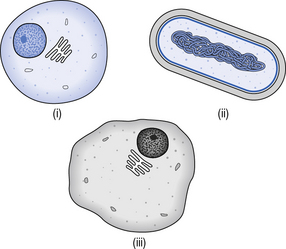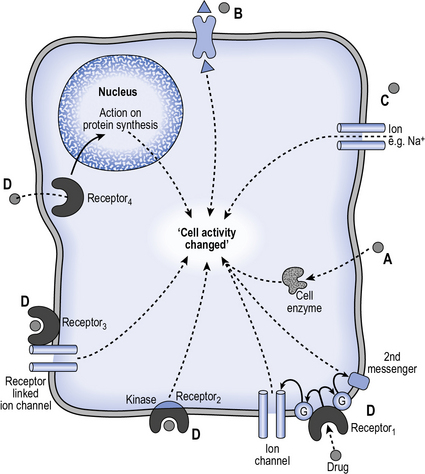4 An introduction to pharmacology
Introduction
Pharmacology can be defined as the study of chemicals (drugs), which can influence and, by this means, change the activity of living structures, i.e. the cells of the body. Consider three types of cell: (i) a typical human cell, (ii) a bacterial cell (as a representative of micro-organisms which may cause disease in humans) and (iii) a tumour cell (see Fig. 4.1). Drugs have been designed to influence each of these cells.
Pharmacodynamics and pharmacokinetics
Our cells can be likened to highly organised factories contained within a barrier, the cell membrane. The internal organelles house the biochemical processes of the cell orchestrated by complex arrays of enzymes. Figure 4.2 shows a diagrammatic view of a human cell and the various targets of drug action detailed below.
The first potential cell target we will describe for drugs are the cell enzymes (labelled A on Fig. 4.2). It is possible for a drug to inhibit these biological catalysts to bring about a change in cell activity. For example, the liver cells of the body contain an enzyme responsible for the production of cholesterol. By inhibiting the enzyme in this cell using the statin drugs, less cholesterol is produced, the build up of cholesterol in blood vessels is reduced and the benefit for the individual is reduced cardiovascular disease risk.
In the first group we can include carriers (sometimes referred to as transporters) and ion channels. Carriers are often protein structures which the cell uses to transport material into the cell. Drugs can be used to block the activity of these structures, i.e. the compound is not taken into the cell (see Fig. 4.2
Stay updated, free articles. Join our Telegram channel

Full access? Get Clinical Tree







